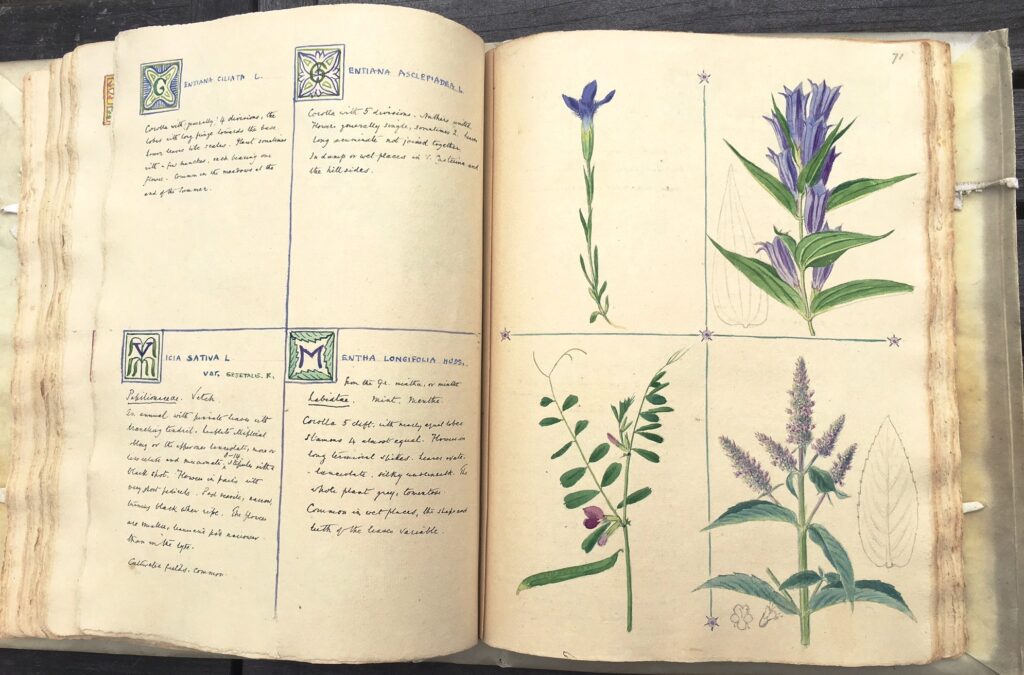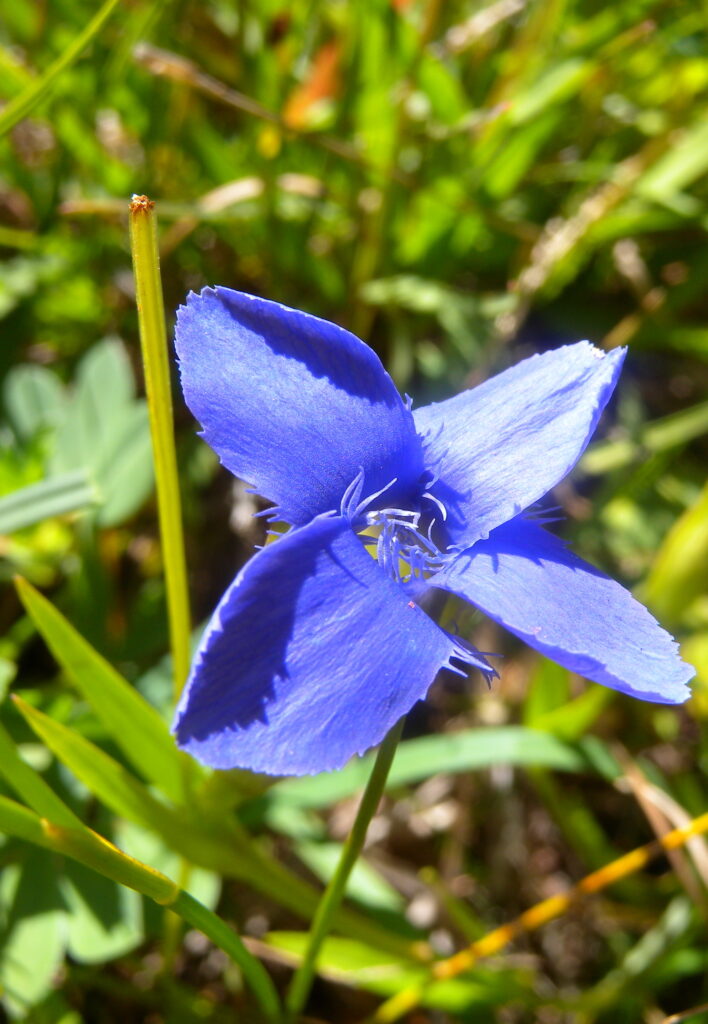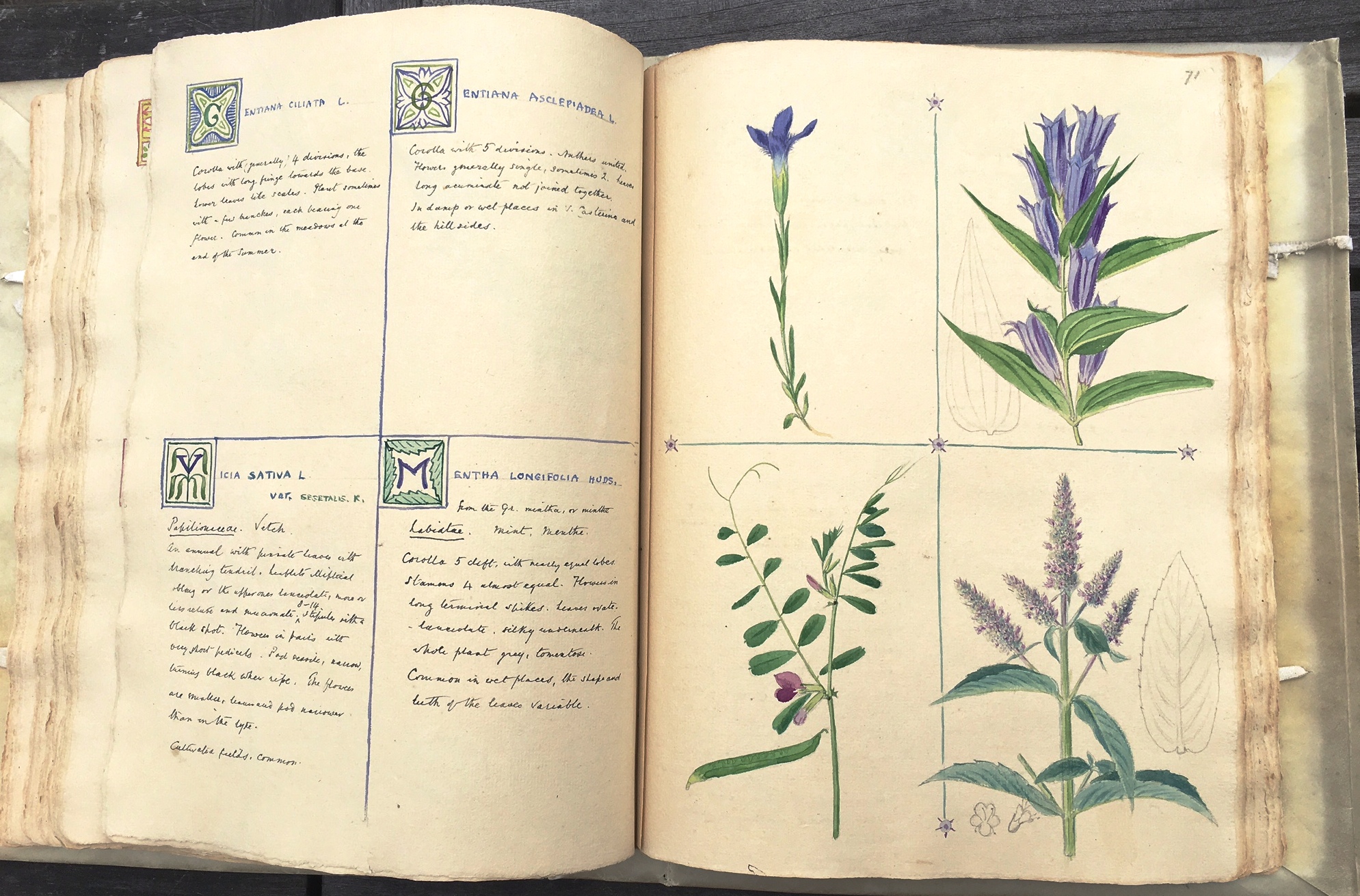
The Children’s Book of Wild Flowers by Clarence Bicknell has watercolour drawings of four flowers on the righthand page and their description on the lefthand page. The first letter of the genus is illustrated with a monogram drawing from features of the plant. The hand-written and -illustrated book is in the Bicknell family collection curated by Marcus Bicknell.
Today’s page is dominated by the two Gentians in the two upper windows of the page. They are Gentiana ciliata and Gentiana ascepidaea.
1) Gentiana ciliata L. or Gentianella ciliata (L.) Borckhausen or Gentianopsis ciliata (L.) is known as Genziana sfrangiata (Italian), Gentiane ciliée (French) and Fringed gentian (English). Flower with a simple stem, only sometimes with a few branches each bearing one flower. The corolla has four deep blue lobes, with long fringes at the base. Lower leaves like scales. Clarence writes in his Book for Children “Common on the meadows at the end of the summer” by which he means the meadows around the Casa Fontanalba at Casterino.

2 Gentiana asclepiadea L. is known as Genziana di Esculapio (Italian), Gentiane à feuille d’esclépiade (French) and Willow gentian (English). Family : Gentianaceae. Visually attractive, of relevance for conservation, not common, name comes from Asclepio (Esculapio), the ancient Greece god of medicine. Herbaceous strong plant from 15 to 80 cm with one branch of inflorescence, generally 1 flower, max 3 flowers (3-5 cm) each bud, colour deep blue-violet, upright or bent towards the same side. Oval pointed leaves rounded at basis not joined together. Flowering time : August to October. Damp or humid habitat of Alps up to 2000 mt. Clarence writes in his Book for Children: “In damp or wet places in Val Casterino and the hillsides”.
No.56 in our series of images by Clarence Bicknell 1842-1918 www.clarencebicknell.com. With thanks to Elisabetta Massardo for her contirbutions to the text and the photo.
